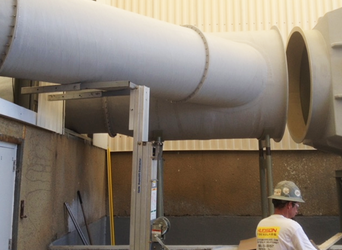The ABCs of FRP Pipe Inspections: Key Steps for Efficient Maintenance
Fiber Reinforced Plastic (FRP) pipes are an essential component in various industries, known for their durability and resistance to corrosion. However, like all infrastructure, FRP pipes require regular inspections and maintenance to ensure they operate efficiently. Understanding the ABCs of FRP pipe inspections can significantly enhance their longevity and functionality.
Here are the key steps involved in ensuring efficient FRP pipe inspections.
1. Assessing External Conditions
The first step in efficient FRP pipe maintenance is a thorough assessment of external conditions. Inspectors look for signs of wear, such as cracks, dents, or discoloration. Environmental factors like exposure to harsh chemicals or extreme weather conditions can impact the pipe’s integrity. Identifying these issues early allows for targeted repairs, preventing further damage.
2. Basic Structural Integrity Checks
Inspectors delve into the structural integrity of the FRP pipes. They assess factors such as wall thickness, potential delamination, and the condition of joints and fittings. Advanced technologies like ultrasound and X-ray inspections help identify hidden defects. Understanding the structural integrity ensures the pipe can withstand operational pressures, guaranteeing safety and efficiency.
3. Comprehensive Interior Examination
The interior of FRP pipes is as vital as the exterior. Interior inspections involve assessing factors like erosion, corrosion, or the build-up of sediment or debris. These elements can compromise the pipe’s flow capacity and overall efficiency. Regular cleaning and maintenance are essential to prevent clogs and ensure a smooth flow, reducing the risk of operational disruptions.
4. Documentation and Data Analysis
Accurate documentation of inspection findings is crucial for effective maintenance. Inspectors record every detail, from surface conditions to structural analyses. This data is then analyzed to identify patterns, potential weaknesses, and areas needing immediate attention. Detailed documentation forms the basis for a proactive maintenance plan, ensuring timely repairs and reducing the risk of unexpected failures.

5. End-to-End Assessment
A comprehensive FRP pipe inspection doesn’t focus solely on specific segments but considers the entire system. End-to-end assessments involve examining the pipe network from the source to the endpoint, including bends, transitions, and connecting components. This holistic approach guarantees that every part of the system functions optimally, enhancing overall efficiency and durability.
6. Future-Proofing with Regular Maintenance Plans
Regular inspections are the cornerstone of efficient FRP pipe maintenance. Establishing a periodic maintenance plan ensures continuous monitoring, allowing for preventive measures and timely repairs. By addressing minor issues before they escalate, businesses avoid costly downtimes and extend the lifespan of their FRP pipe systems.
Trust Hudson Fiberglass for Top-Notch FRP Pipe Inspections
When it comes to reliable FRP pipe inspections, repairs, and maintenance, trust the expertise of Hudson Fiberglass. Based in sunny Florida, we offer top-notch FRP pipe and tank inspections, FRP tank repairs, fiberglass surface coating, and more to clients worldwide. Our skilled technicians employ advanced techniques and years of experience to provide comprehensive solutions tailored to your specific needs.
Don’t compromise on the efficiency and safety of your FRP pipes. Contact Hudson Fiberglass today to schedule an inspection and ensure your systems are in optimal condition. Your pipes deserve the best—choose Hudson Fiberglass for unmatched expertise and reliability.



